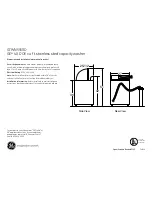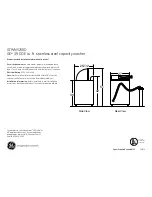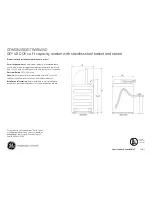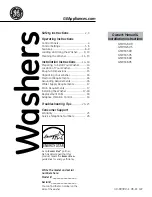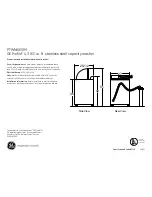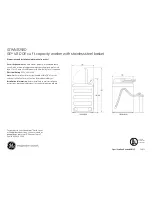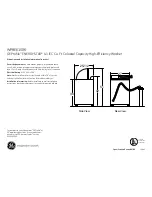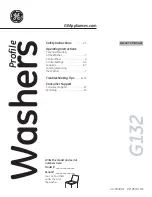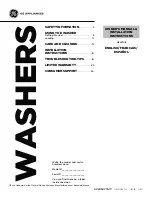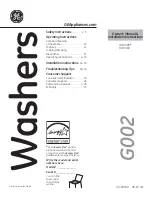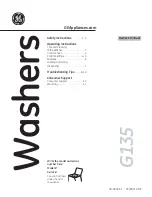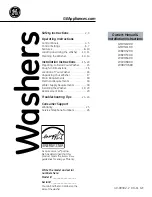
3
EN
PROGRAMS TABLE
ECO program data is measured under laboratory conditions according to European Standard EN 50242. Note for Test Laboratories: For information on
comparative EN testing conditions, please send an email to the following address: [email protected]
Pre-treatment of the dishes is not needed before any of the programs.
*) Not all options can be used simultaneously.
**) The duration of the program shown on the display or in the booklet is an estimate calculated on standard conditions. The actual time may vary
depending on many factors such as temperature and pressure of the incoming water, room temperature, amount of detergent, quantity and type of load,
load balancing, additional selected options and sensor calibration. The sensor calibration can increase program duration up to 20 min.
Standby consumption: Left-on mode consumption: 5 W - Off mode consumption: 0.5 W
Program
Dr
y
ing
phase
Available options
*)
Detergent
container
Duration of
wash program
(h:min)
**)
Water
consumption
(litres/cycle)
Energy
consumption
(kWh/cycle)
Tub B
1. Eco
50°C
3:20
12.0
1.04
2. Intensive
65°C
-
2:30
15.0
1.50
3. Normal
55°C
-
2:00
15.0
1.35
4. Rapid 30’
50°C
-
-
0:30
8.5
0.50
5. Pre-Wash
-
-
-
-
0:10
4.5
0.01
PROGRAMS DESCRIPTION
Instructions on wash cycle selection.
ECO
Normally soiled crockery. Standard program, the most efficient in terms
of its combined energy and water consumption.
INTENSIVE
Program recommended for heavily soiled crockery, especially suitable
for pans and saucepans (not to be used for delicate items).
NORMAL
Normally soiled crockery. Everyday cycle, that ensures optimal cleaning
performance in shorter time.
RAPID 30’
Program to be used for lightly-soiled dishes with no dried food
residues.
PRE-WASH
Crockery to be washed later. No detergent to be used with this
program.
Notes:
Please note that cycles like Rapid or Fast are most effective for lightly
soiled dishes.
To reduce consumption even further, only run the dishwasher
when it is full.









